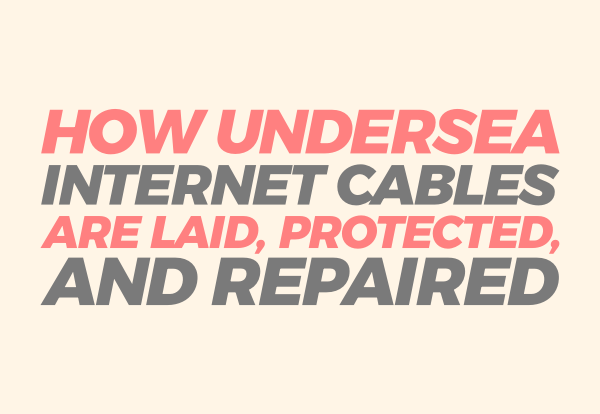{tocify} $title={Table of Contents}
Ships Lay Undersea Internet Cables Across Great Distances
Undersea internet cables (or submarine cables), which help connect the world, are placed on the ocean floor by special ships carrying huge rolls of cable. These ships move slowly over the water, carefully laying the cables on the seabed.
The cables are placed in an "S" shape instead of a straight line to handle tension and make repairs easier if needed. This design helps prevent damage from things like ocean currents or unexpected impacts.
When a roll of cable runs out, the crew splices the ends together—a process involves joining the fiber-optic strands without leaving any gaps. For very long routes, extra ships deliver more cable rolls so the work can continue without stopping.
Why Undersea Internet Cables Are Strong and Dependable
These cables are made to last, with thick layers of protection to handle underwater pressure, currents, and marine life. Metal sheaths and other materials shield the delicate fiber-optic strands inside.
Even with this protection, cables can sometimes get damaged. Sharks have been known to bite the cables, possibly because of the electromagnetic fields they give off, but this doesn’t happen often. Fishing nets and ship anchors are more common causes of damage.
To avoid losing connections, several cables are usually placed along the same path. This way, if one cable gets damaged, others can still carry data without major disruptions.
Repairs Are Complex but Efficient
Fixing damaged cables depends on where they are. In shallow waters, divers can do the repairs directly. In deeper areas, ships use tools like grappling hooks to lift the cable. The damaged part is cut out, and the ends are carefully spliced back together. Special underwater robots are sometimes used for repairs in difficult conditions.
Maintenance ships are always ready to fix problems quickly, keeping the cables in good shape.
Challenges of Laying and Maintaining Cables
Laying and maintaining undersea internet cables is a tough and expensive job, costing between $30,000 and $90,000 for every kilometer. Crews have to deal with rocky seabeds, bad weather, and the precise work of splicing the cables together.
Thanks to improvements in materials and technology, today’s cables last longer and perform better than before.
Why Undersea Internet Cables Are Still Important
Contrary to popular belief, most global data transmission does not rely on satellites. Undersea cables are much faster and more reliable than satellites, which often have delays because of signal travel time.
These cables are vital for modern internet connections and show how much effort goes into their creation and placement.
Conclusion
Undersea internet cables are a key part of global communication, allowing data to move between countries quickly and reliably. They are made to handle the tough underwater environment and are maintained using advanced tools and backup systems to prevent interruptions.
As the demand for faster internet grows, these cables will continue to play a big role in connecting the world.
Source: Reddit
Read also: Why Computers Are More Vulnerable to Viruses Than Mobile Devices

